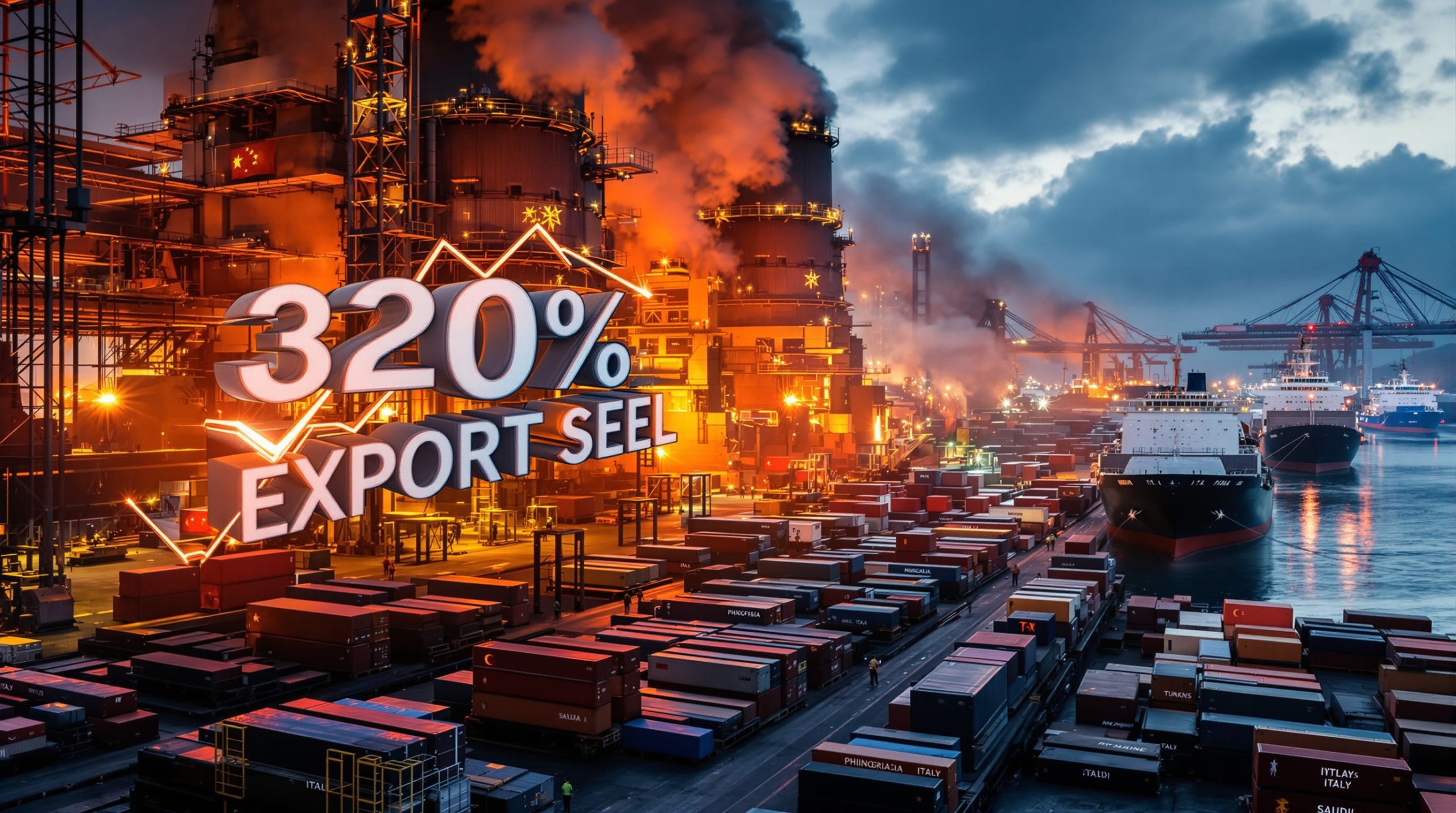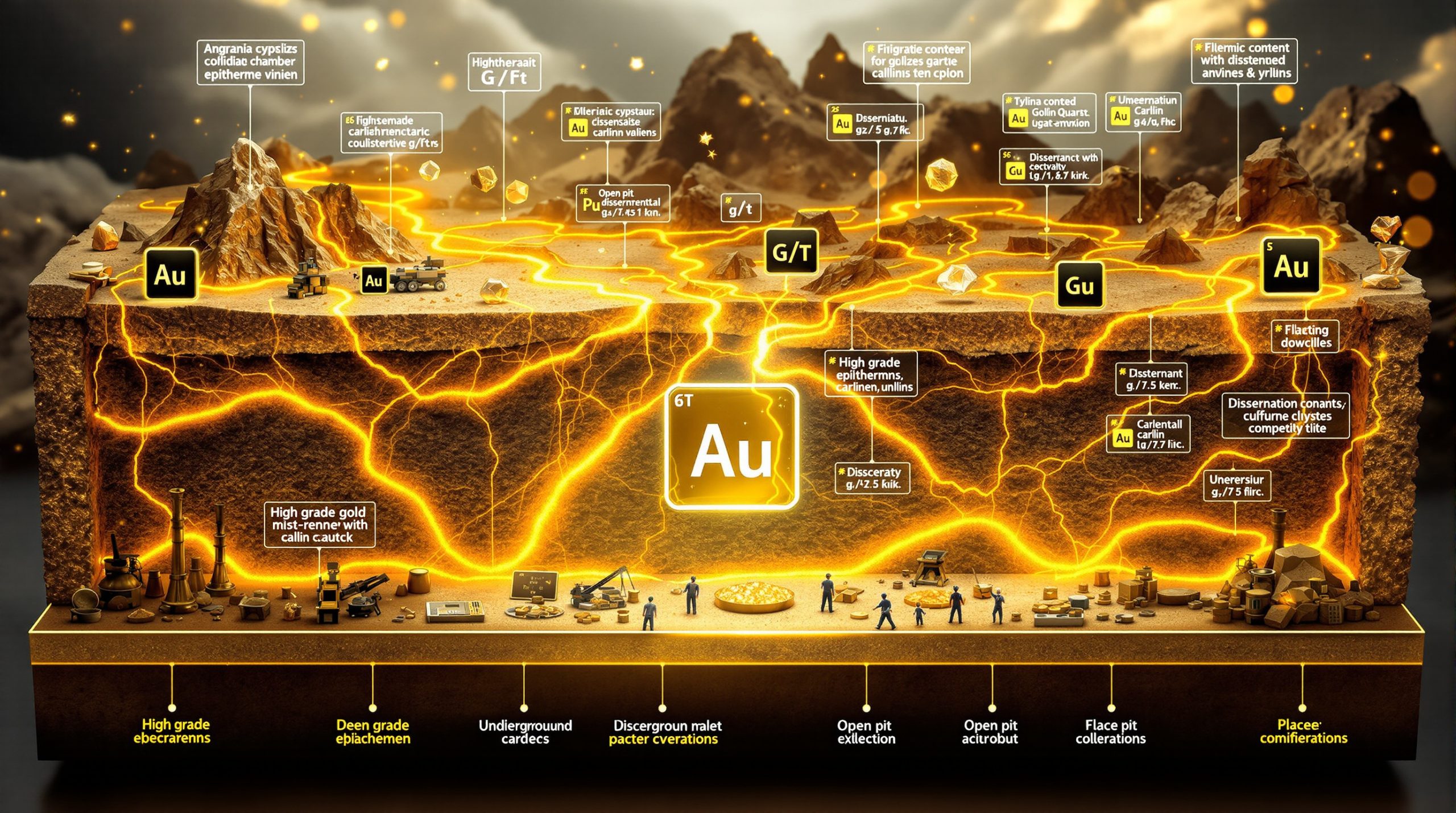What Are Tailings and Why Should We Rethink Them?
Tailings represent far more than just mining waste. They encompass a diverse category of residual materials generated from various industrial, natural, and human activities. While traditionally associated with mining operations, the concept of tailings extends to numerous sectors and processes that create residual materials requiring management and potential repurposing.
This comprehensive understanding challenges us to reconsider how we classify, manage, and potentially utilize these materials in a resource-constrained world facing environmental challenges.
According to the Global Tailings Portal, mining operations alone generate an estimated 10-12 billion tonnes of tailings annually worldwide, while anthropogenic waste like plastics exceeds 400 million tonnes per year according to UNEP data from 2023. These staggering numbers highlight the urgent need for innovative approaches.
As Bruce Downing, M.Sc., P.Geo., aptly states, "Tailings are not waste but misplaced resources awaiting innovation." This perspective shift is gaining traction among industry experts and environmentalists alike, who increasingly view tailings as valuable resource banks rather than environmental liabilities.
"The circular economy principles we're now applying to tailings management represent a fundamental paradigm shift in how we value these materials," notes Dr. Marie Morganelli, an environmental resource specialist.
Modern innovations like carbon sequestration using magnesium silicate tailings demonstrate the untapped potential of these materials. Through mineral carbonation processes, certain mine tailings can actually absorb significant amounts of CO₂, transforming an environmental challenge into a climate solution.
How Are Mining Tailings Managed Today?
Storage Methods and Facilities
Mining tailings typically require sophisticated containment systems to prevent environmental contamination. According to industry data from ICMM, approximately 85% of mines worldwide use Tailings Storage Facilities (TSFs), while only about 10% employ dry stacking methods, though this number is increasing.
The most common storage approaches include:
- Tailings Storage Facilities (TSFs): Large land-based containment areas where tailings are often submerged underwater to prevent metal leaching and acid rock drainage
- Underwater Reservoirs: Natural lakes or ocean environments that serve as storage locations in specific circumstances
- Dry Stack Facilities: Dewatered tailings storage that reduces liquid content and potential mobility
Modern TSF engineering requires advanced geosynthetic liners and digital monitoring systems for seismic stability, representing significant investments. Cost comparisons reveal that while TSFs typically cost $1-5 million per hectare to construct, dry stacking methods range from $3-8 million per hectare but offer superior environmental performance.
As Geary, an environmental engineer, points out, "Dry stacking reduces long-term environmental liabilities by 40% compared to conventional wet storage methods, representing a significant advancement in tailings management technology."
Modern mining operations must carefully engineer these facilities to prevent failures, which can have catastrophic consequences for surrounding communities and ecosystems. The World Mine Tailings Failures Report indicates a global TSF failure rate of 1.2% since 2000, highlighting ongoing risks despite technological improvements.
Innovative Approaches to Mining Waste
The mining industry is developing progressive approaches to tailings management:
- Reprocessing Technologies: Advanced methods to extract valuable minerals from historic tailings that contain economically viable concentrations of precious and base metals
- Carbon Sequestration: Utilizing tailings for carbon capture and storage, transforming waste into a climate solution
- Ocean Floor Mining Considerations: Emerging proposals to extract and potentially return processed materials to deep-sea environments
Chile's Escondida mine demonstrates innovation through solar evaporation techniques for brine tailings management, significantly reducing water consumption in an arid region. Meanwhile, ongoing trials in the Clarion-Clipperton Zone are exploring the feasibility of ocean floor mining with stringent environmental protocols supervised by the International Seabed Authority.
These innovations represent a shift from viewing tailings solely as waste to seeing them as potential resources with economic and environmental value.
What Are Anthropogenic Tailings?
The Growing Challenge of Human-Generated Waste
Anthropogenic tailings—the residual waste from human activities—represent a massive global challenge. These materials include:
- Plastics and microplastics (over 2 billion tonnes globally according to the Ellen MacArthur Foundation)
- Construction waste (including gypsum board)
- Household products
- Food waste
- Single-use items
Unlike mining tailings, which are typically confined to specific storage facilities, anthropogenic tailings are often dispersed widely across landfills, waterways, and unregulated disposal sites. This dispersal creates unique management challenges, as the environmental footprint extends far beyond the original waste site.
Methane emissions from landfills contribute approximately 14% of global greenhouse gas emissions according to recent IPCC assessments, adding climate impact to the direct environmental concerns of waste accumulation.
Landfill Sites as Future Resource Banks
Modern waste management is beginning to view landfills not just as disposal sites but as potential resource banks:
- Urban Mining: Extracting valuable materials from landfills through advanced sorting and processing
- Waste-to-Energy Conversion: Transforming non-recyclable waste into heat or electricity
- Material Recovery: Reclaiming plastics, metals, and other materials for recycling or repurposing
Dr. Lipson, a waste management researcher from Chicago, observes that "Landfills are tomorrow's resource banks if recovery technology matures to economic viability." This perspective is gaining traction as resource scarcity increases and technology advances.
Amsterdam's Waste-to-Energy plant exemplifies this approach, processing 1.2 million tonnes of waste annually into electricity while recovering metals and reducing landfill volume. AI-driven sorting technologies now achieve 90% recovery rates for metals from electronic waste, dramatically improving the economics of urban mining operations.
The regulatory landscape varies significantly between regions. The EU Waste Framework Directive mandates higher recovery rates and stricter processing standards than current EPA regulations in the United States, leading to divergent approaches to anthropogenic tailings management globally.
How Do Natural Processes Create Geological Tailings?
Natural geological processes have been creating "tailings" long before human industrial activity:
- Volcanic Ash and Deposits: Residual materials from volcanic eruptions that can remain in the atmosphere, water bodies, and land for centuries, with global deposition reaching 1.5 billion tonnes annually according to USGS data
- Mineral Precipitation: Natural concentration of minerals through geological processes, particularly evident in hydrothermal vents where sulfides deposit at temperatures reaching 300°C
- Erosion and Sedimentation: Movement and deposition of materials through water and wind action
Some of these naturally occurring materials, such as bentonite and zeolites, have proven highly beneficial for human applications in various industries. Global bentonite reserves exceed 1.4 billion tonnes according to the USGS Mineral Commodities Summary, with major deposits concentrated in Wyoming (USA) and Turkey.
Professor Scott, a geological scientist, notes that "Natural tailings like zeolites revolutionized water purification and environmental remediation technologies, demonstrating how geological processes create valuable resources rather than waste."
Iceland provides a compelling case study in the practical application of natural "tailings," incorporating volcanic ash into cement production. This practice not only repurposes what would otherwise be considered waste but also reduces the carbon footprint of construction materials through reduced clinker content.
What Are the Environmental Implications of Different Tailings?
Comparative Environmental Impacts
Both mining and anthropogenic tailings present environmental challenges, though their impacts differ in scale and nature:
| Type | Containment | Dispersal | Monitoring | Reclamation Potential |
|---|---|---|---|---|
| Mining Tailings | Confined to specific facilities | Limited geographic spread | Regular monitoring required | Higher potential for resource recovery |
| Anthropogenic Tailings | Often in landfills or dispersed | Widespread environmental presence | Variable monitoring | Complex recovery challenges |
EPA studies from 2024 indicate that TSFs cause approximately 50% higher acute toxicity in surrounding ecosystems compared to municipal landfills when failures occur. However, the dispersed nature of anthropogenic waste creates chronic, widespread contamination that's harder to remediate.
The containment technology differences are significant as well. TSF liners typically utilize HDPE materials with a functional lifespan of about 30 years, while advanced clay composite systems may maintain integrity for 100+ years under optimal conditions.
NOAA research from 2023 revealed that 75% of deep-sea fish now contain microplastic particles, demonstrating the global reach of anthropogenic tailings compared to the more localized impacts of mining waste.
Failure Risks and Consequences
Both types of tailings storage systems carry risks:
- TSF Failures: Can result in catastrophic releases of potentially toxic materials into surrounding environments
- Landfill Issues: May include fires releasing toxic fumes, methane generation contributing to climate change, and leachate contaminating groundwater
The Brumadinho dam failure in 2019 offers a sobering example, resulting in 270 deaths and approximately $7 billion in cleanup costs. This catastrophic event underscores the acute risks associated with TSF failures.
Reclamation costs also differ significantly between tailings types. Major TSF remediation projects typically range from $500 million to $1 billion, while comparable landfill reclamation efforts generally cost between $200-500 million, reflecting differences in contamination intensity and regulatory requirements.
How Can We Transform Tailings from Waste to Resource?
Emerging Technologies and Approaches
The future of tailings management lies in transformation rather than mere containment:
- Enhanced Mineral Recovery: Using advanced processing techniques to extract valuable minerals from tailings
- Circular Economy Applications: Repurposing tailings for construction materials, soil amendments, or other industrial uses
- Biological Remediation: Employing microorganisms or plants to neutralize or extract harmful elements
Recent USGS data from 2024 indicates that rare earth element recovery from historical tailings can now achieve 60% efficiency with advanced hydrometallurgical processes. This represents a significant improvement over earlier technologies and opens new economic opportunities for transformative tailings reprocessing.
Carbon sequestration through mineral carbonation of tailings shows remarkable potential, with scientific models suggesting it could contribute to 5-10% of global CO₂ reduction targets if implemented at scale.
As noted by iMotions in their research on industry innovations, "Replication requires citing methods; tailings technology must be transparent to gain industry and regulatory acceptance." This highlights the importance of open knowledge sharing in advancing tailings management practices.
Case Studies in Tailings Repurposing
Several innovative projects demonstrate the potential for tailings transformation:
- Extraction of rare earth elements from historic mine tailings
- Using mine tailings in cement production to reduce carbon footprint
- Converting organic waste from landfills into compost or biogas
CarbiCrete offers a compelling example of circular economy principles applied to tailings management. By incorporating steel slag tailings in place of traditional cement, the company produces carbon-negative concrete products that sequester more CO₂ than they emit during production.
These circular economy applications demonstrate approximately 30% cost reduction in construction materials while simultaneously reducing environmental impact—a rare win-win in resource management.
What Regulatory Frameworks Govern Tailings Management?
Both mining tailings and anthropogenic waste are subject to environmental regulations, though oversight varies significantly by region and material type. Key regulatory considerations include:
- Environmental impact assessments
- Engineering standards for containment facilities
- Monitoring requirements
- Closure and reclamation planning
- Liability for long-term management
Under the Clean Water Act, EPA penalties for TSF violations can reach $50,000 per day of non-compliance, creating significant financial incentives for proper management. Meanwhile, the EU's Critical Raw Materials Act establishes ambitious targets for mining digitization insights and circularity, mandating 20% tailings recycling by 2030.
Girard, an environmental policy analyst, observes that "Global standards lag behind technological innovation by 5-10 years," creating regulatory gaps that can impede the implementation of best practices.
The contrast between Canada's Mining Association (MAC) guidelines and Brazil's post-Brumadinho regulations highlights how disaster response shapes regulatory frameworks. Brazil now mandates independent third-party inspections and real-time monitoring systems, while Canadian standards emphasize risk assessment and community engagement in tailings management planning.
FAQ: Understanding Tailings Beyond Mining
What is the difference between tailings and waste?
Tailings specifically refer to residual materials from processing operations, while waste is a broader term encompassing all discarded materials. Tailings are typically the byproduct of a specific extraction or processing activity. The distinction matters because tailings often contain residual valuable materials at sub-economic concentrations that may become viable resources as technology and market conditions evolve.
Can tailings be completely eliminated?
Complete elimination is unlikely, but volume reduction through more efficient processing, recycling, and repurposing can significantly minimize tailings generation and environmental impact. Advanced ore sorting technologies can reduce tailings volume by up to 30% by separating waste rock before processing, while innovative extractive techniques continue to improve recovery rates for target minerals.
How long do tailings facilities need to be maintained?
Tailings facilities often require monitoring and maintenance for decades or even centuries after operations cease, creating significant long-term environmental management challenges. This timeframe creates complex intergenerational financial and ethical considerations. Most regulatory frameworks now require financial assurance mechanisms to ensure funds remain available for maintenance long after mining operations have concluded.
Are there economic opportunities in tailings reprocessing?
Yes, as technology advances and resource scarcity increases, previously uneconomic tailings may become valuable sources of minerals, construction materials, or other resources. Nicola Mining in British Columbia provides a case study of successful tailings reprocessing, applying modern hydrometallurgical techniques to historic copper-gold tailings that were previously considered waste. Technological improvements continue to lower the economic threshold for viable reprocessing projects.
How do microplastics compare to mine tailings in terms of environmental impact?
While mine tailings are concentrated in specific locations, microplastics have become nearly ubiquitous in global ecosystems. Both present significant but different environmental challenges—tailings with localized but potentially acute impacts, and microplastics with widespread chronic effects. Research indicates that while tailings may cause more intense contamination in specific areas, microplastics present broader ecological concerns due to their persistence and mobility throughout food chains.
Reimagining Our Relationship with Residual Materials
The concept of "tailings" deserves reconsideration in our resource-conscious world. Whether from mining operations, consumer activities, or natural processes, these materials represent both environmental challenges and potential resources. By expanding our understanding beyond the traditional mining context, we can develop more holistic approaches to managing these materials.
The future of tailings management lies in innovative technologies, circular economy principles, and a fundamental shift from viewing these materials as waste to seeing them as potential resources. This transformation will require collaboration between industry, government, researchers, and communities to develop sustainable solutions that protect the environment while maximizing resource recovery.
As Bruce Downing and other experts in the field have demonstrated, a new look at the word tailings opens possibilities for resource recovery, environmental protection, and economic opportunity. The companies and countries that lead this transformation will gain competitive advantages while contributing to global sustainability goals.
"What we once discarded as waste increasingly represents tomorrow's resource bank. The challenge lies not in the materials themselves, but in our perspective and technological approach to their management." – Resource Science Institute, 2024
This reimagined approach to tailings doesn't eliminate environmental challenges, but it does create pathways toward more sustainable ESG mining strategies and green mining innovations in a world facing increasing material demands and environmental constraints.
Ready to Spot the Next Major Mineral Discovery?
Stay ahead of the market with Discovery Alert's proprietary Discovery IQ model, which instantly notifies investors of significant ASX mineral discoveries and transforms complex data into actionable insights. Explore why historic discoveries can generate substantial returns by visiting Discovery Alert's dedicated discoveries page and begin your 30-day free trial today.




